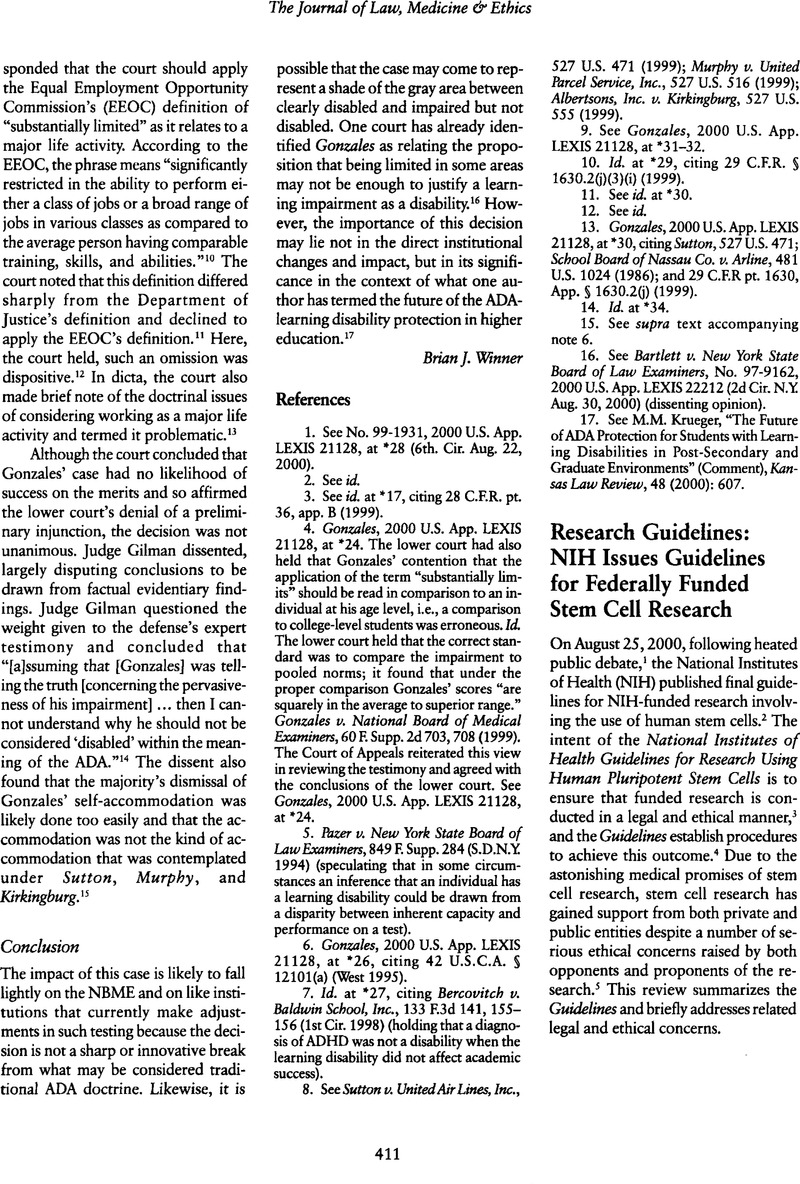Opponents often characterize proponents' arguments as “utilitarian” at best and have compared stem cell research to medical experiments conducted by the Nazis in World War II, as in this comment by Senator Sam Brownback (R-KS): “… like what happened in World War II. [The Nazis figured that] these people are going to be killed, why not experiment on them ….” See
Senate Health Appropriations Subcommittee Hearings, April 26, 2000. See also
Irving, D.,
“Stem Cell Research: Some Pros and Cons,” Canadian Physicians for Life (visited Oct. 11,
2000) <
http://physiciansforlife.ca/stemcell1.html>.
Google Scholar